-
Posts
517 -
Joined
-
Last visited
Content Type
Forums
Detector Prospector Home
Detector Database
Downloads
Posts posted by cjc
-
-
What a coincidence, Joe--I did a hunt that was pretty much the same--big gold and a silver dime. (Give or take 16 grams...). Quite proud of this one actually in that it was a hairpin sized signal--("ya learn kid, but'cha learn slow...)." That is such an awesome find--some real weight. Thanks for the settings too. Jumping between the modes seems to help with the pins ID, also what I'm learning is that like all of Eric's machines the "sides" are critical information--where you have that nice "whoop" upswing / downswing--good sign. Had the CS6PI out after (2 hours of AQ --waa--no night before top up), and this machine has very similar audio--maybe a bit better in that clean edges always mean no steel. The potential of the AQ is certainly there, and a few things that Jim mentioned to me about the low uSC ranges "vibrating or "exciting" the ground deeper made the faint range easier to understand, target acquire and respond to. I've had to really focus on my coil control and pulse basics with this detector and would (objectively) recommend that anyone new to pulse hunting read my book "Pulsepower" to get a handle on some of these (...always be closing...). With the Cuda, keeping the threshold (tuner) low makes a huge difference in how pins and caps sound--with even a tiny decrease changing the information a lot. This worked really well today with the AQ-kept me off these and on just the small foils and solid bits. Loose the pins and caps and this detector looks better every day. Good Luck, Congrats, clive
-
3 hours ago, Joe Beechnut OBN said:
That swing speed is killing me also being the big coil is like a steering wheel. I think if we do see a 8 inch AQ coil it's going to be a Big help to all...
ya, the back 1/3rd of this machine is really faint needs that slow slow to hear the deepest ones but they are really way down--object of the game.
cjc
-
8 hours ago, Tony said:
The day I started worrying less about a quick delay and more on a smooth threshold was the day I started finding more gold. Yes, the smaller/finer and lower karat gold rings respond better to a quicker delay BUT only if you can hear them above the salt response in moving salt water. The bigger and higher karat gold rings will still respond very well to delays above 15uS !
Absolutely use the quickest delay possible if salt signal isn’t a problem 👍That;'s great advice, Tony. Took me a while to learn that with the TDI thinking it had to be run way down to get it's power. Not true. Great to see that you are still at it. Kind Regards clive
-
That's a good example, Rick. I see it in terms of "values" and each site and machine have specific ones. These include: depth, coverage, accuracy--sometimes you need all three...I will say that there's no question that the AQ has this kind of potential.
On a good day we are able to "match the hatch"...
cjc
-
Different PI machines do different things. The right one in the right conditions will make a believer of you. Where I hunt--competing with pros who work 10 hours a day and hike 5 miles each way to do so--VLF depth is the surface I operate on. Swinging an Excal--or even the CTX would be pointless. Keep working testing and practicing--don't give up. cjc
-
Mr. Goldmaster is an example of a highly successful hunter who only uses a small coil--so it can be done. I ran the Cuda with an 8" coil for years and did really well with it too. However you run a pulse for depth--no way to sugar coat that either--and an oceangoing pulse needs to be designed with stability as a first consideration--not an afterthought to any other performance features. This is why I"m afraid to post here--or on the FB--my opinion is viewed as either good copy or potential detraction when the simple fact is that the "jury is still out." Besides, I sell books, not detectors--books about those machines that sell a lot. Not by coincidence--these tend to be machines that are versatile. Based upon my experience with various pulse machines --I would say that a 10" coil would be more manageable in fast salt--and still accomplish some coverage. The SMPI Diver is that size and one of the most stable and effective coils made. I'm glad to see Jim doing well with this machine--he's a pulse "master" and I respect his opinion greatly. If this detector (in its present form) is adequate for his needs--it's more than adequate for mine. How his experience will translate to the wider, less skilled general market remains to be seen. We are already seeing examples of "average" hunters who are not sure how to apply this machine to (their specific) fast salt conditions. I will say that these machines tend to be more stable in deep water--as Jim alluded to. Accommodating the market's needs falls to the manufacturer--not the other way round. cjc
-
Thanks for your interest in my new book.
Kind Regards
clive
-
Thanks for your reply, Bling. That's been my experience--you pick up a tip here and a setting there, and eventually you have a whole lot of "things to try." Then, once in a while you manage to "hit the nail on the head...". I've been six years learning how to hunt with accuracy using the TDI Pro--but now--its an incredible tool that gives me a huge advantage--over even other pulse hunters. All those challenges are worth the journey.
I've finally come up with a reply for those pesky "should I dig everything?" guys: "Yes---if you have no other skills whatsoever...!"
cjc
-
21 hours ago, Chase Goldman said:
Clive, most of the "magic" of Multi IQ is likely about how the target signal is processed not what and how many simultaneous individual constituent frequencies are transmitted by the coil. There is ample evidence from those who have actually measured the individual frequency components being transmtted by the coil for the various Equinox modes, that all four of the. Park and Field modes across the board likely, simply use the two frequencies of 7.8 khz and 39 khz (5 to 1 frequency ratio) combined and transmitted simultaneously (different frequency combos are used for the Beach and Gold Multi IQ modes). Yet each of those modes has very different responses to high and low conductive targets. This can only be explained by postulating that the relative magnitudes of the two different transmit frequencies are varied from mode-to-mode and/or different signal processing algorithms are applied to the received target signals from mode-to-mode. In fact, adding another discrete frequency to the simultaneous frequency mix would likely only degrade performance as transmit power would have to be shared between 3 vice 2 individually and simultaneously transmitted frequency signals, reducing depth performance (a case of where more is not necessarily better).
That being said, it really appears that 4 khz has something different going on vs. the other five original single frequency settings and that may actually be indicatve of some additional signal processing magic. Perhaps ML is attempting to optimize a new signal processing algorithm by getting it into the fielded Equinox machines as a massive beta test bed (albeit in a single frequency vice multifrequency application, to start) for potential incorporation into their next genera mtion Multi IQ platform (e.g., a Mu,ti IQ variant of the CTX). All just hopeful speculation on my part.
I think Minelab just created a lot of consternation and confusion with their infamous "cloud" diagram (below) that implied but never actually confirmed that the 5 original individual single frequency settings of the 800 were also the individually transmitted, simultaneous multifrequency constituents of Multi IQ. If this were actually true, then that would probably be one of the most craptastic multifrequency detector technology implementations of all time for the reason stated previously regarding power efficiency. Adding 4 khz would just make the situation worse, as stated above. Consistent with the sentiment that respected detector engineer Carl Moreland (Geotech) has expressed elsewhere on this board, and as an engineer myself, I am very disappointed that the ML engineering community allowed the marketeers to let that pseudoscience graphic design abomination see the light of day. Reading more closely, it appears that the advantages of two different Equinox concepts/technologies/capabilities were attempting to be explained that were both rooted in the principle how targets of consisting of metals of different conductivity and magnetic properties respond differently to different transmit frequencies, simultaneous multi-frequency (Multi-IQ) and discrete selectable multifrequency (which ML dubs 5Fx8 on the 800 and 3Fx3 on the 600). In the former, you can get away with just two or three simultaneously transmitted frequencies to get the desired "frequency spectrum effect" due to signal interference and harmonics when two or more frequencies are mixed (ironically, the principle of a beat frequency oscillator used by early BFO machines). But to cover the same spectrum "ground" so to speak, using single selectable multifrequency requires a lot more discrete signal frequencies to be able to be transmitted one at a time (ML chose 5 and then eventually 6 for the Equinox 800...wonder if they have to call it 6Fx10, now and what about the 600, is that now 4Fx3.75?
 ). These two concepts got smushed together somehow in the graphic below and most everyone got confused as a result (including me, until Carl and others helped me to understand how what ML was showing/implying in this diagram could not represent a practical working simultaneous multifrequency detector).
). These two concepts got smushed together somehow in the graphic below and most everyone got confused as a result (including me, until Carl and others helped me to understand how what ML was showing/implying in this diagram could not represent a practical working simultaneous multifrequency detector).
That's certainly and interesting and informative run-down, Chase. I had the impression that multi meant multi--but in using the detector had the sens of high and low competing--with small surface targets dominating to produce a "bittyness" to the audio if you were up too high in one of the higher weighted modes (P2, B1...). The industry is certainly no stranger to "psuedoscience"--I guess they don't expect guys with engineering backgrounds and the wherewithall to conduct proper testing (Carl is certainly a known "debunker") to take them to task. The modes certainty do each "feel" different and what will stabilize one will make another go berserk. Of all the machines that Jim and I have looked at--we are still trading notes and trying to get a handle on the EQ. My take is that sometimes it surprises you with the depth--other times with the lack of it....
I share your next gen CTX dream...but hope it's easier to figure out and tune than the EQ.
cjc
-
On 7/25/2020 at 3:59 PM, Chase Goldman said:
Weird. Wonder just what are these deep, large targets in Asia that are invisible at 5 khz but not at 4 khz. Glad we are still getting updates 2.5 years into the original release, scratching my head this is really at the top of the list - it was not even on my personal Equinox enhancement radar screen. Having a frequency shift option (+/- 1 khz across the board) would have made more sense if EMI was the real driver to 4 khz. And then again the all encompassing "stability enhancements" - that is clear as mud but hopefully useful. Really would like to have seen a host of other enhancements such as improved pinpointing "stability" [maybe part of the stability enhancements perhaps - we'll see], perhaps a VCO like pitch tone on the non-gold modes, back-and-forth mode navigation (instead of the one-way merry-go-round), future proofing the bluetooth interface since 3rd-party APTX-LL hardware seems to be doing the opposite of "catching on" in the marketplace, and a true "raw" unprocessed all-metal mode would be cool. The other stuff (more sophisticated target ID and discrimination and other FBS goodies) I can wait for the Equinox/CTX "1040" iteration. Oh, and I hope they fixed that dreaded nickel on top of a dime issue. That should have been at the top of their list...
 BTW - how about some smaller form factor elliptical coils, Minelab, if you really want to help out your Equinox users...tired of being jealous of the kid running around here with the Vanquis 540 and that cool 8 inch elliptical.
BTW - how about some smaller form factor elliptical coils, Minelab, if you really want to help out your Equinox users...tired of being jealous of the kid running around here with the Vanquis 540 and that cool 8 inch elliptical.
Finally, cool down vest dude in the promo pic, quit admiring yourself in the truck windshield and start swinging that Equinox, ya prima donna slacker! Since you don't have a digger, looks like you are going to have to get those french manicured nails dirty.
Hope they got his good side--guess they ran out of bearded guys.
I had really hoped that 4kHz would be in the multi mix hence the stability gains by way of balance in the higher weighted modes ie P2. Jury still out would like to hear from some salt water hunters on this. Never liked how the big coil performed in salt--same with the CTX's even bigger processor. cjc
-
I'l say this: Having run a TDI Pro in the water for a few years I can say that with this type of detector you can hear the (wide) caps and the weakish and irregular sound of pins--but it takes time. Coming from a VLF though this is not the level of signal examination that you've needed so far. Kind of the choice between the conductivity or--everything else. This is why I always tell my readers that pulse skills will help you with any machine you plan to run--when you add this broad based approach to a discriminate circuit you become much more accurate. Not many bother.
As Alexandre suggests--you will hear these differences better without the "fullness" of a high Sensitivity setting--or at the edges of the detection range. With the Dual Field I suggested in my book that new pulse hunters run it in so called "discriminate mode" that is--a very low Gain setting that reveals more about a target. Same with the AQ. Im learning it's language slowly and also now feel more confident with my TDI too in that I realize that this level of signal examination is not optional--even though it seems painstaking--its how to get more conclusive with the machine--period. It becomes second nature after a while. Also, to examine the whole signal you have to know what that is--size, shape, "width" solidity, "peak" "sides" "carry" and context. Basically you are looking for "sets" of target characteristics. With the AQ add high / low in tone mode--quite a big plus. Even our Canadian steel dimes present too wide of a signal to be gold--and in Tone--the low "ends" give them away.
cjc
PS Cuda Mark you may have to change your handle--you are in the presence of "the man"...Jim-- I hear it was a car too...supposedly...
Also don't forget that second charge it stays red for quite a while must be something going in.
-
9 hours ago, schoolofhardNox said:
Great ring!!! I wonder if the owner actually found that stone? It seems he had it hand mounted as best as he or someone could. Very crude setting. Who knows how old it is. I'm assuming the signal was fairly quiet but wide and steady?
looks like he made the setting with his teeth...but I don't put those back...
Ya, a clean, centered signal. Had the machine in a picked over site and there were no responses of that quality--caps are inconsistent for the most part and the pins are becoming more recognizable too--call it TDI Pro muscle memory...kind of like the Cuda too good responses are more "under the coil".
cjc
-
4 hours ago, LE.JAG said:
Very beautiful ring Clive, very yellow gold !
yes, gold always gives a sound that stretches
elastic is a good definition
the sound of aluminum, suddenly falls to him
you have to get your ear / you must already have it :))
how much weighs, the big bracelet 22k
who is the problem ?
we have not done any test, with jewels over 50 gr monobloc (gold)
not common to find ..
there is surely a tipping point / determined by the weight of the gold
but it remains, really special and rare casesThanks for your reply, Denis--will give that some thought. Setting is 7.3 22k
good luck clive
-
41 minutes ago, cudamark said:
Congrats Clive! How deep was the ring?
...I would say 15 to 18--inches that is-- about the third scoop with the big Stealth 720. I learned more from hearing that one signal than from all the rest of the time with the AQ. Nice optimization almost like my beloved 'Cuda...
I can see that this detector has a narrow optimal range--aluminum and gold but the aluminum sounds weak and not as "elastic" as Denis put it...more centered.
I know from running my GQA2 and CS6PI for decades to listen to the "sides" of the signal--tells you everything.
cjc
-
Steve don't--been plugging away at that site for years...lucky to get a quarter most of the time...cjc
-
For sure a good start 22k 7.3 gr. Being told the emerald is dark and of good quality the type worn in the North of India Deli area and would belong to a "big family" owing to it's value.
Very nice signal on the AQ sounding bigger than it was and very clean --really got a sense of the machine's optimization with this find. Also getting the hang of this "setpoint" type of Discrimination never really use my TDI Pro in the GB mode. Now to figure out the two Discrimination models (reject vs SAT). In the tone mode Im still a bit concerned about it "squelching" on some big 22k such as a bangle and will need to do some more testing.
...and a garbage heartstopper chain certainly looked good for a nanosecond...
cjc clivesgoldpage.com
-
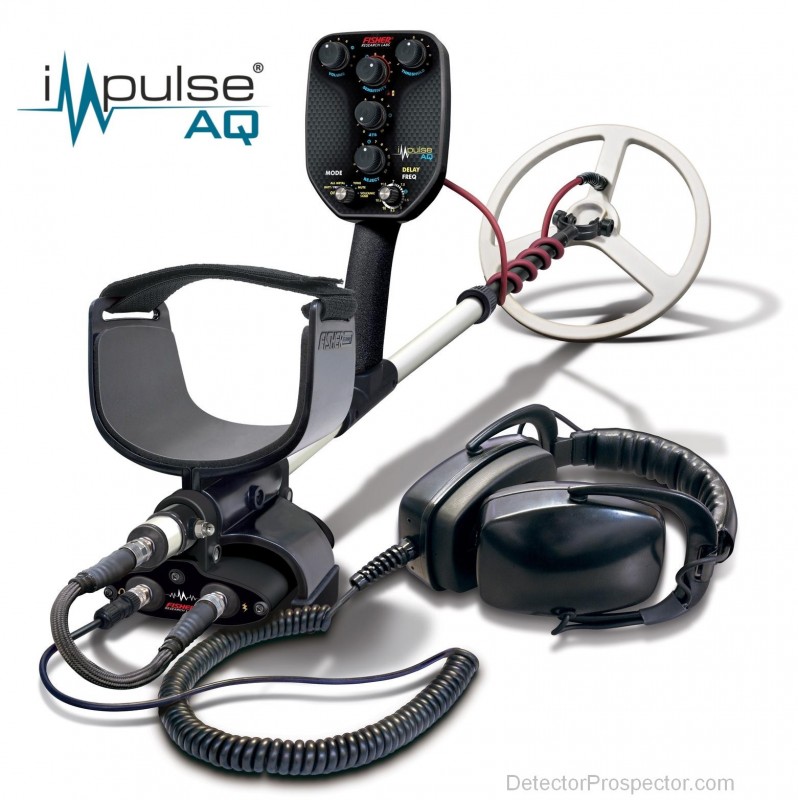
New Fisher Impulse AQ pulse induction metal detectorIve listened to a lot of hunters scoff at the simple basic skills I promote in my books. However as these machines become more powerful—with more telling audio and more heavily processed signal—the more important these basics become. The Fisher Impulse AQ is a good example of this. The only way to describe this detector is to say that it’s “a beast” very deep and powerful—on a par with any not-gold -specific pulse out there (SD / GPX/Z Series). I also own a waterproof TDI Pro and the AQ’s performance characteristics resembles this machine quite closely. For one thing with each—as you turn them up—it’s harder to hear any detail in the response. The lower Sensitivity settings go almost as deep but let you hear the weak responses of junk or the elongated tone of a hairpin better. The “maxed out” settings can come later. As well, with both, when a target has some steel in it as do many bottlecaps, this shows up at the ends of the tone. This is especially true of the Impulse AQ in “Tone” mode. A good way to demo this is to get a clean non- ferrous signal then move your scoop in closer to hear the tone change. This sound is one of your primary weapons in trash. As well—the simple basic of listening for a narrow peaked tone will help you to zero in on the non-ferrous targets. With any detector—a peaked sound means something that’s distinct from the ground. There’s a lot to becoming accurate with a pulse and it takes time. What helps is to have a “language” of signal characteristics to pair with your digs:
-wide / narrow.
-overall size.
-consistency on the cross-sweep.
-peaked / drawn out.
-single or double tone.
-how does it respond when you raise the coil? (Faint or dropping out altogether)?
-overall correlation (size / strength / depth make sense).
-smooth or sharp tone ends.
-signal tone itself as relates to an optimized pulse such as the Anchor Electronics Barracuda or the Pulsepower Developments Aquasearch. (With this type of a PI--the "cleanest" sound you hear will be gold).
These are some of the target characteristics that--if you pay attention to them will make you a more accurate pulse hunter. I’ve been hesitant to get out with the Impulse AQ because the sites near me are so full of trash. The hunt I did today in this type of conditions showed me that it is possible to use a pulse in dense trash but to dig random targets is a recipe for frustration. When you begin to use the above basics it’s possible to become more accurate—just as you can using a VLF in All Metal mode.
I also found the Impulse AQ’s iron rejection modes to be interesting and effective tools although I’ve a lot to learn about how to best use them. From observing Alexandre’s tuning video the sense I get is that setting the AQ is about working with combinations of Sensitivity, ATS (re-tuning speed) and Rejection. The amount of Delay used also plays a role here too in that longer Delay settings will reduce the machine’s response to weak targets such as foils and hairpins. What I’ve seen so far makes me think of a comment of Eric Foster’s in describing the effects of the Aquasearch’s adjustments (Delay, SAT and Threshold) as being “nonlinear.” I think this will be an important part of understanding the Impulse AQ.
I also noticed that the adjustments Alexandre made were small but produced dramatic changes. This points to a detector with a lot of fidelity--a versatile machine.
With the TDI Pro, the challenge for me has been learning to turn it down enough to have a stable threshold in fast salt and stay off the “micro conductors”--but to still get more performance than say--a Dual Field. This was important in that the Dual Field is more stable in fast salt--so why have an erratic machine with the same usable performance range? What I found was that the TDI needed to be run up at 12 uSc—same as the Dual Field.
While I’ve yet to run the AQ in salt—the overall performance in fresh water and black sand seems to indicate that it will be more stable than the TDI Pro. This would be a huge gain in and of itself--TDI Pro depth—with more stability at the lower Delay ranges.
Can’t wait!
cjc
-
1 hour ago, Willy said:
Designing a new mechanical system is a 'bit' more than tweaking a picture with Photoshop. This indeed looks nice BUT one also has to care about a lot of 'small' details like the costs and complexity of the tools to mold these plastic components and the way to assemble them to be sturdy and waterproof while keeping a light weight.
Willy I can see that you have a lot of knowledge of detector construction and performance. Thanks for your ongoing contributions to this discussion--really appreciate the learning. Good Luck Detecting,
clive
-
On 7/5/2020 at 7:49 AM, Steve Herschbach said:
We know you have an AQ Clive... you posted that you did on Facebook.
 Any early thoughts or observations? Likes or dislikes? Inquiring minds want to know! And yes, we are hoping for a book ASAP.
Any early thoughts or observations? Likes or dislikes? Inquiring minds want to know! And yes, we are hoping for a book ASAP.
Well, Steve, Im working full time right now in response to the virus. Wish I had time to hunt more but have had it out a few times. I'm a ways off from the level of information density and value that I like my books to have. The prefab way in which some authors construct their books with the same pages being used from one to the next is definitely a road I don't plan to go down. My readers expect more. Certainly getting some good notes though.
See a lot of potential in this machine wish I could get to some better sites to really see what it's got. I do like the stability and the depth of the All Metal mode. I also like the overall response --the speed and small gold sensitivity. Like any machine they key will be in finding where to best use it's strengths. Under normal circumstances this machine would have been on a plane with me within weeks of arriving but that will have to wait for now. Thanks for asking!
cjc
-
Got it thanks for the correction. Kind of why I call it 3 tone--it showed up second anyhow lol. Never been thrilled with the AM on the Anfibio either kind of flat for a machine with that kind of punch. AM is supposed to be you "bread and butter".
clive
-
A Few Notes on the Nokta / Makro Simplex
I originally thought that the Notka / Makro Simplex + would be a good lightweight backup to take cycling or in my pack along the beach. It’s turned out to be a lot more. The Simplex is now my go-to park machine. I say this because if it’s excellent trash rejection and overall accuracy. This is a detector with very sophisticated electronics. When I take the Simplex + in at trash infested areas--I can tell by the audio what’s under the coil. Coins or other round targets give clean sharp sounds. Other misshapen and inconsistent objects like “can slaw” or twisted wire give broken tones and scattered meter readings.
The meter itself is also very accurate--after several months I’m able to pick out clad quarters and our one and two dollar coins with ease. Targets that read “way up” on the scale--in the high 90’s tend to be iron. I can also hear the “width” of signal well--steering me off the big iron and other large junk. I can also tell a dime--by the size. This is hands down the best beginner machine I’ve used. Last week I dug a clad dime at over 10 inches. While this is not that deep by some standards--just how good of a signal it gave was a shock to me.
Even if it was not waterproof, the Simplex would be a great value--but it is fully submersible with a set of optional underwater phones. Its always been my experience that you are much more likely to make big finds in the water--even at the very edge.
I also like the quick, practical interface. I usually search in the new Park 2 Tone ID mode. This alerts me to coin-range targets “loud and clear.” From there I can check questionable targets in the high bias (greater iron rejection) “Field” mode with one press--or All Metal mode with two presses. These two quick tests--along with using the “cross-sweep” and pinpoint mode give a ton of target information. This is just a really well laid-out, well thought-out machine that will satisfy hunters at all levels. It also has a lot of nice small touches--built-in flash light, backlit controls and display, wireless audio, and a feature that lets you hear as much or as little iron as you want. While there aren't’ many great silver or relic sites near here, I’ve increased my clad coin find count a lot using this machine. Moreover---it’s a pleasure to use and I enjoy listening to how accurately it processes whats under the coil and brings up the best signal from among the junk. I’m still learning and need to get more familiarity with some of the middle ranges. I do know that the high 20’s are a good gold range.
Another huge feature of the Simplex + is that the wireless phones can be paired with a Notka / Makro pinpointer so that as soon as you switch on to locate a target--the detector sound turns off and you get this big, clean headphone tone to locate your target with. This is something I’ve always loved about the Anfibio--great to see the same feature in an even more affordable detector.
I take this machine to a park that has seen 40 years worth of detectors and never fail to come out with a surprising haul. The Simplex + has brought new life to every “worked out” site in my area with it’s accuracy and sharp performance. This detector has let me return to “hunting local”--and make good use to the limited time I have.
I have been recommending this detector to anyone who asks about a good unit to learn their basics with. At the same time--this is a great performing machine for intermediate hunters--or a reliable backup for those at the top levels of the hobby.
Just wish the entry level detectors were like this when I started!
Good Luck Detecting!
Clive James Clynick
Toronto, Canada
-
A Few Notes on the Nokta / Makro Simplex
I originally thought that the Notka / Makro Simplex + would be a good lightweight backup to take cycling or in my pack along the beach. It’s turned out to be a lot more. The Simplex is now my go-to park machine. I say this because if it’s excellent trash rejection and overall accuracy. This is a detector with very sophisticated electronics. When I take the Simplex + in at trash infested areas--I can tell by the audio what’s under the coil. Coins or other round targets give clean sharp sounds. Other misshapen and inconsistent objects like “can slaw” or twisted wire give broken tones and scattered meter readings.
The meter itself is also very accurate--after several months I’m able to pick out clad quarters and our one and two dollar coins with ease. Targets that read “way up” on the scale--in the high 90’s tend to be iron. I can also hear the “width” of signal well--steering me off the big iron and other large junk. I can also tell a dime--by the size. This is hands down the best beginner machine I’ve used. Last week I dug a clad dime at over 10 inches. While this is not that deep by some standards--just how good of a signal it gave was a shock to me.
Even if it was not waterproof, the Simplex would be a great value--but it is fully submersible with a set of optional underwater phones. Its always been my experience that you are much more likely to make big finds in the water--even at the very edge.
I also like the quick, practical interface. I usually search in the new Park 2 Tone ID mode. This alerts me to coin-range targets “loud and clear.” From there I can check questionable targets in the high bias (greater iron rejection) “Field” mode with one press--or All Metal mode with two presses. These two quick tests--along with using the “cross-sweep” and pinpoint mode give a ton of target information. This is just a really well laid-out, well thought-out machine that will satisfy hunters at all levels. It also has a lot of nice small touches--built-in flash light, backlit controls and display, wireless audio, and a feature that lets you hear as much or as little iron as you want. While there aren't’ many great silver or relic sites near here, I’ve increased my clad coin find count a lot using this machine. Moreover---it’s a pleasure to use and I enjoy listening to how accurately it processes whats under the coil and brings up the best signal from among the junk. I’m still learning and need to get more familiarity with some of the middle ranges. I do know that the high 20’s are a good gold range.
Another huge feature of the Simplex + is that the wireless phones can be paired with a Notka / Makro pinpointer so that as soon as you switch on to locate a target--the detector sound turns off and you get this big, clean headphone tone to locate your target with. This is something I’ve always loved about the Anfibio--great to see the same feature in an even more affordable detector.
I take this machine to a park that has seen 40 years worth of detectors and never fail to come out with a surprising haul. The Simplex + has brought new life to every “worked out” site in my area with it’s accuracy and sharp performance. This detector has let me return to “hunting local”--and make good use to the limited time I have.
I have been recommending this detector to anyone who asks about a good unit to learn their basics with. At the same time--this is a great performing machine for intermediate hunters--or a reliable backup for those at the top levels of the hobby.
Just wish the entry level detectors were like this when I started!
Good Luck Detecting!
Clive James Clynick
Toronto, Canada
-
It's a sad day when basic detector care (rinsing, cable care) have to be layed out for customers. Manufacturers shouldn't have to "idiot proof" their products. One things Jimmy Pugh (Anchor Electronics Barracuda) told me" "...your cables are like your veins". Very good advice. This sounds like a very exciting machine.
cjc
-
Just an afterthought--I have a beach that's full of this slag too. Run the F2 up at 8 or 9--it will knock out these complex alloys. This is a very valuable feature that no other detector has best I know.
cjc



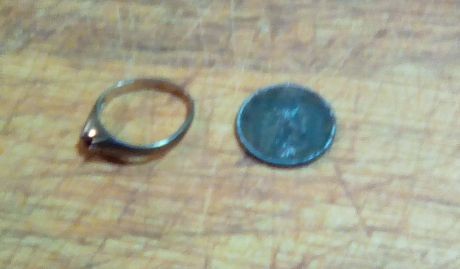
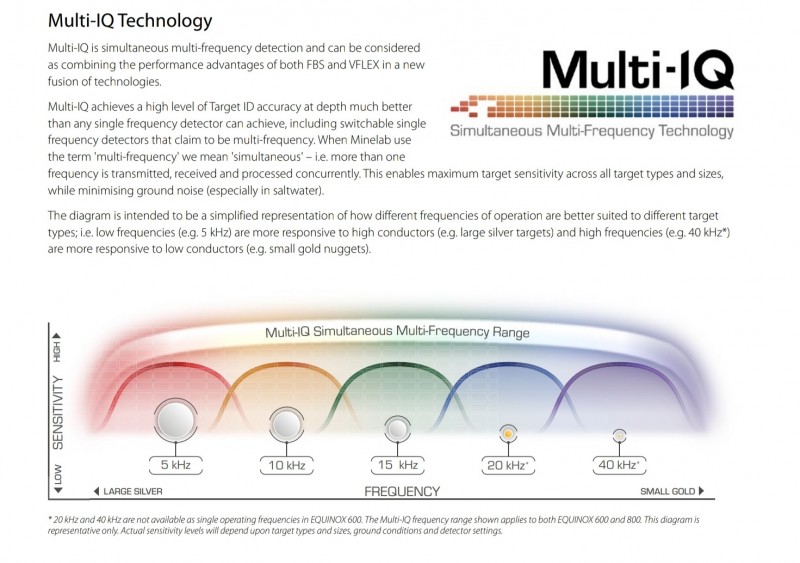
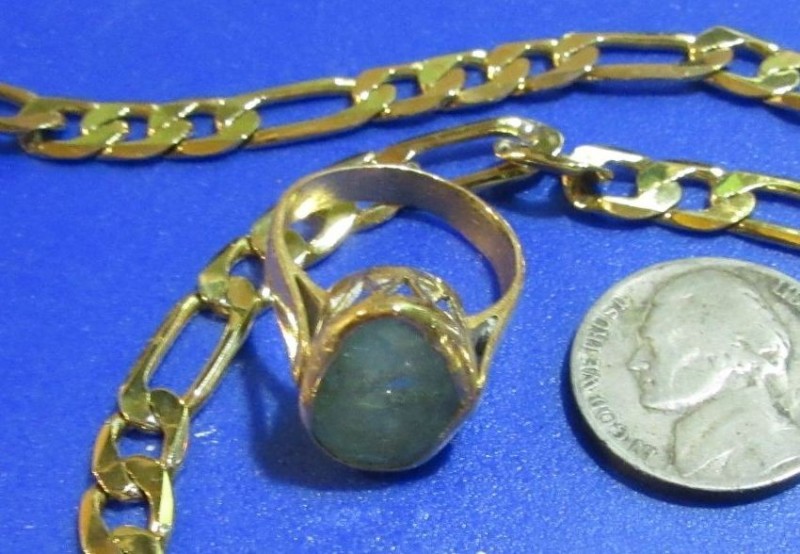
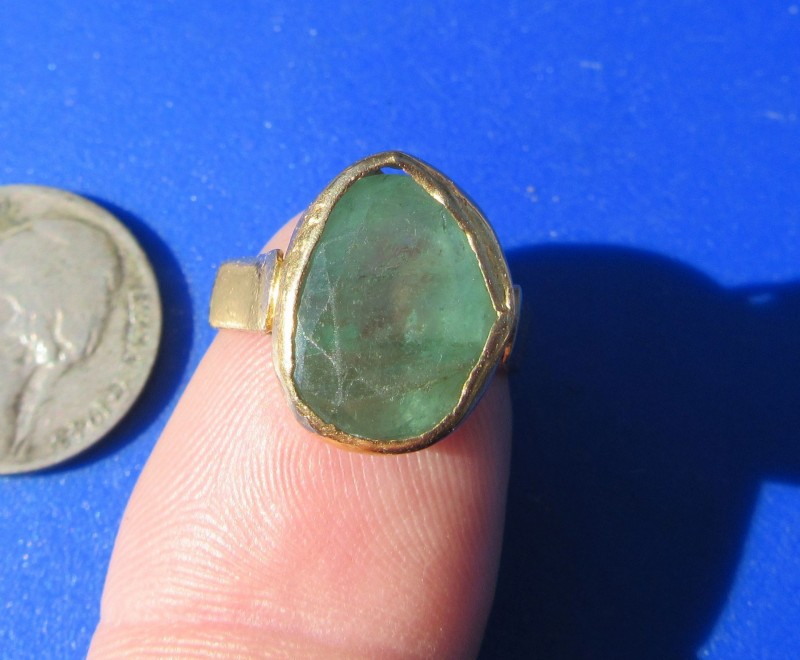
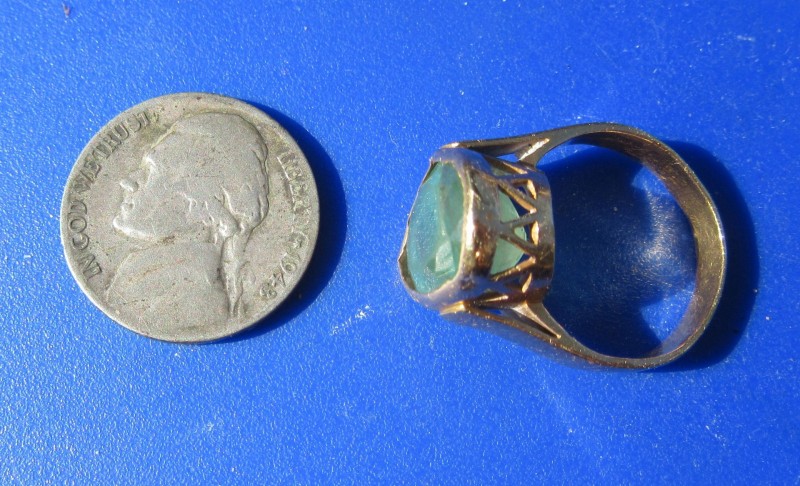


Underwater Amplified Headphones Project...
in Metal Detecting For Jewelry
Posted